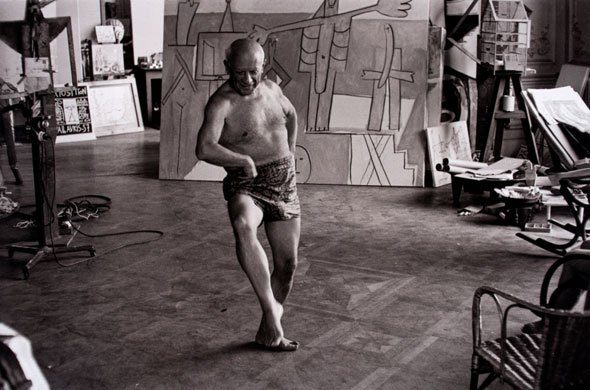Physicist: Although not common, completely new, novel colors are found from time to time.
There’s a vast conspiracy of optometrists and ophthalmologists who will try to convince you that our three types of cone cells somehow limit our vision, in a way that creatures with a wider variety of cones cells are less limited. But of course: color is color and you see it or you don’t. There are plenty of colors beyond the hegemonic “standard rainbow” and we don’t see them for exactly the same reason we don’t see unicorns or bigfeet: they’re very rare and never where you’d expect.
This story is nothing new. For example, regular old blue is a difficult color to isolate. If it weren’t for the sky, we’d barely ever see it in nature. And because “rare” = “expensive” = “classy”, we have “royal blue” (since royals love to be classy). Once upon a time, seeing something vibrantly blue would have really caught your attention: instantly recognizable, yet wholly alien. Seeing one of the many colors beyond the standard rainbow is a similar experience.
Sometimes a new color can be found just by looking somewhere no one else has bothered to look. For example, in 1768 Jeanne Baret, during her circumnavigation of the Earth in disguise, discovered three new colors, “och”, “ocher”, and “ochest”, only one of which is still in common use today. The first and last of these are totally distinct from any other color or combination of colors, but such were the chromatic strictures at the time, that they were shoehorned into the now defunct “och scale” (hence the names).
New colors are often found by painters who, obsessed with extending their craft, may stumble upon new materials, colors, and palates previously unseen on Earth. Desperate to keep the momentum after gaining fame for his signature style, “plusieurs visages sur la même tête“, Picasso invented a never before seen shade of cherry-blue. With his usual flare for nomenclature, Picasso named his discovery “Color on a Painter’s Palette”, though it rapidly became known as “naughtblue” in the artist community (to avoid any confusion with his earlier work).

Picasso dancing for joy in front of his first (and last) naughtblue painting. He considered this discovery to be his greatest accomplishment and was thrilled to have it photographed for posterity.
His stunning naughtblue work, “Woman Standing Around”, is now in a private collection and so lost to the world forever.
Rothko was a painter more interested in color than you are in anything. After a rough night in 1942, book-ended by a fifth of absinthe and Nietzsche’s “Ecce Homo” (the ordering of which is now hotly debated), Rothko “regained cognizance” to find that he had created violet’s precise and indisputable chromatic opposite, “outdigo”. Tragically, outdigo paint famously changes color when it dries, so he was unable to create with it. Indeed, he kept his only supply sealed in an unmarked can until it was accidentally sold at a lawn sale to pay for cooking lessons.

Rothko (left) through his study of hue invented “outdigo”, the obvious-in-hindsight opposite of violet. After misplacing his only can of outdigo paint, he pretty much gave up (right).
Little is known of outdigo, beyond Rothko’s few scribbled notes:
“It has come to me, outdigo. It shall be an heirloom of my studio. All those who follow in my bloodline shall be bound to its fate, for I shall risk no hurt to the color. It is precious to me, though I buy it with a great pain. The markings upon the canvas begin to fade. The color, which at first was as clear as red flame, has all but disappeared – a secret now that only turpentine can tell.”
So there are plenty of new colors, it’s just a matter of persistence, luck, and looking at stuff that no one else has ever bothered to look at.








18 Responses to Q: Will we ever discover a completely new color?